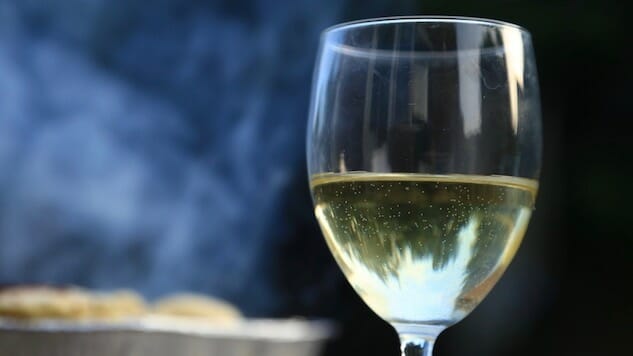52 Wines in 52 Weeks: Riesling
Photo via Shutterstock
With a casual glance at a typical restaurant wine list it’d be easy to believe the only white wines worth drinking were Chardonnay and Pinot Grigio. There are hundreds, probably thousands, of white wine grape varietals, some of which are admittedly very local and hard to find if you aren’t in that little corner of the world. Others are major players that just aren’t heavily marketed in the US for one reason or another. Riesling is one of those grapes.
Things to know about Riesling: It’s a powerhouse with better cellar potential than almost any widely planted white grape. It’s often a bit sweet, which might be why people are sometimes afraid of it, but Riesling can be anywhere from a full-on dessert wine to dry as a bone, depending on where and how it’s made. Its typical residual sugars make it a great choice for foods that are notoriously hard to pair with wine, like spicy Indian or Szechuan dishes. Though commonly associated with Germany, some of the most compelling Rieslings come from Austria, and the US West Coast is making some inroads with it as well.
Riesling is aromatic and perfumed, and depending where it comes from and how ripe it is when it’s picked, it can have common notes of peaches, pineapple, lime, jasmine, honey, beeswax, Neroli, orange rind, and especially with age, smoky, rubbery or “petrol” notes (that sounds a little gross, maybe? It’s not, at least doesn’t have to be).
Dry Rieslings will have the word “trocken” on the label. Superhoneyed late harvest iterations are often labeled “Spatlaese.” The word “Kabinett” generally denotes upper-tier quality.
Five Bottles to Try
-

-

-

-

-

-

-

-

-

-

-

-

-

-

-

-

-

-

-

-

-

-

-

-

-

-

-

-

-

-

-

-

-

-

-

-

-

-

-

-









































